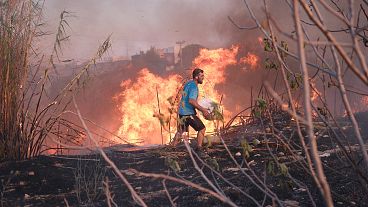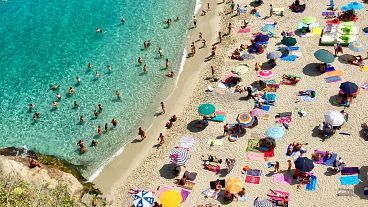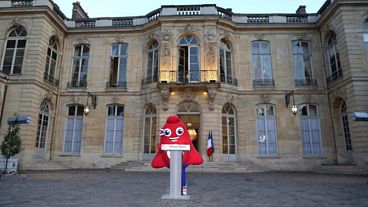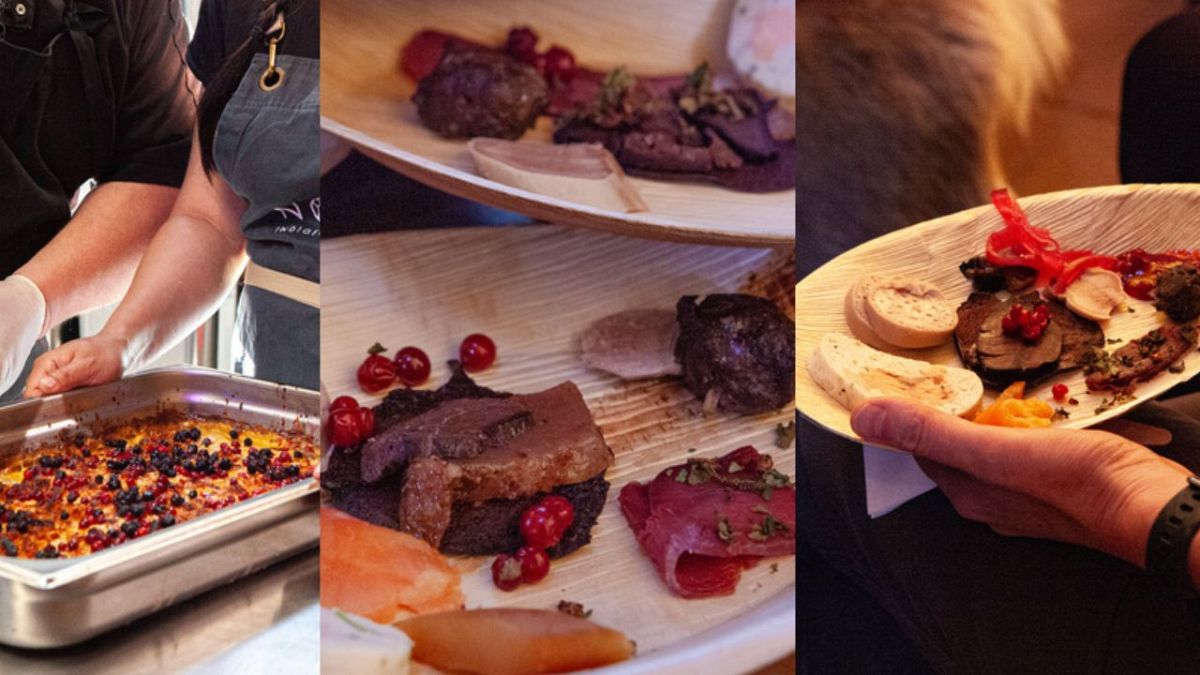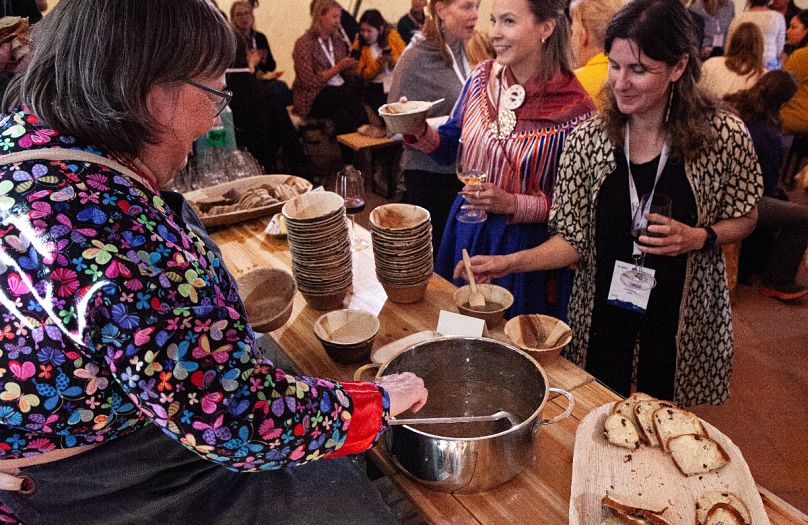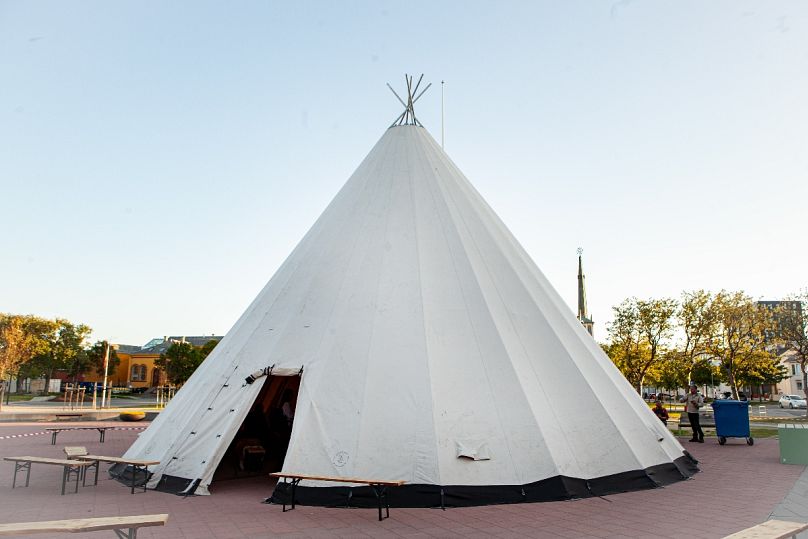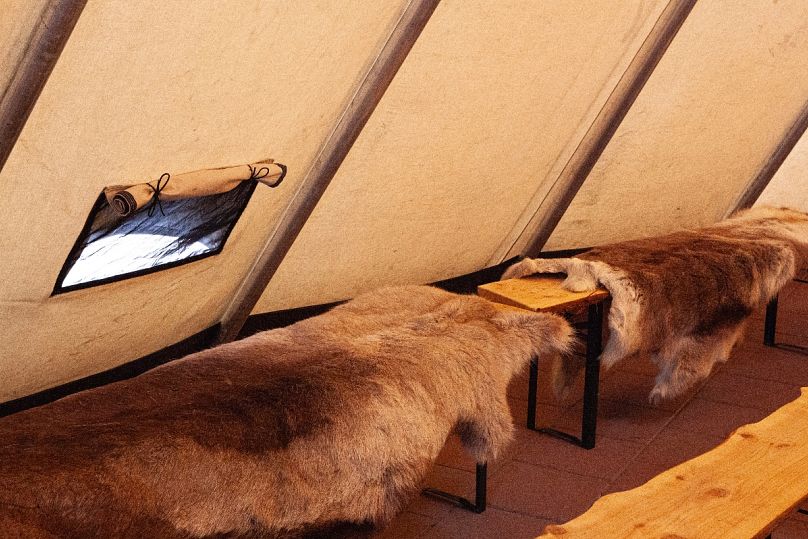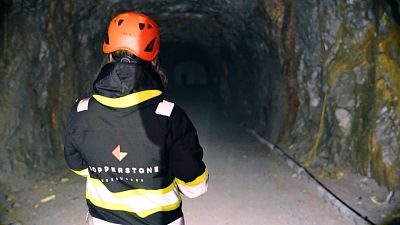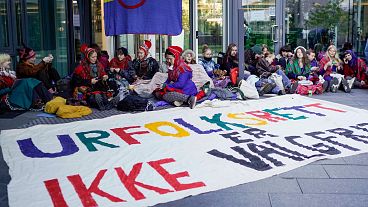The Sámi community want to protect their long-earned gastronomic traditions across the continent.
The glazed seal fat topping a miniature reindeer blood pancake enhances its coppery flavour. Combined with the smoked whale bites that lie on top of the dark flapjack, it is difficult to tell whether this dish tastes more like game or fish. Either way, it’s delicious.
Traditional Indigenous food is based on ingredients harvested from nature: we receive a three-course meal that embodies the richness of Sami cuisine with fish and meat appetisers, a reindeer stew and a squeaky cheese dessert with wild berries.
Sitting on reindeer skin inside the Nomad Indigenous Food Lab which combines a ‘lavvu’ - the traditional Sámi tent - with a stainless steel kitchen, Indigenous youth and chefs tell researchers and policymakers about their struggles in keeping their food culture and tradition alive.
100,000 nomadic Indigenous people can’t find food in the same places as before
Arctic biodiversity is the basis for Arctic food systems and the livelihood of Indigenous populations in ten countries. But, today, Arctic environments are experiencing climate and environmental changes four times faster than any other place in the world.
Retreating sea ice and permafrost thawing impact pasture conditions and routes for livestock and over 100,000 nomadic Indigenous people.
Changing routes make their journeys more complex: “Indigenous communities are being dragged away from their berries patches,” Stephan Schott, a professor in natural resource management at Carleton University, shares as an example.
Food security of these communities becomes more difficult to sustain as they cannot rely on food resources along their paths like in previous years, he says.
But human-caused climate change does not happen in a vacuum. Booming Arctic tourism, increased Sámi land use, and overfishing disrupt further Arctic food systems. It also threatens the passing of culture onto younger generations.
Back in 2014, the world’s top climate scientists, under the IPCC, named protecting grazing land as the most important adaptive strategy for reindeer herders. But Sámi communities’ pastures in Northern Europe are seized as rare minerals are abundant and the construction of mines to extract them can help fasten the green transition. Renewable energy parks have been built on Sámi land in Norway and Finland.
Alongside all this, Schott believes some communities are losing the ability and knowledge to slaughter, hunt, butcher, gather, and conserve food in traditional ways.
“As Sámi youth, it’s hard to preserve some traditions also due to exploitation of resources like salmon,” says Julius Mihkkal Lindi, a young Sámi working in the Arctic and Environmental Unit of the Saami Council. He remembers the first salmon he caught, but nowadays wild salmon fishing is off-limits for Indigenous communities in Canada, Norway and Alaska as the government ban is intended to replenish fish stocks.
What can food diplomacy do for Indigenous communities?
Food security is essential for the survival of these communities - and the right to food sovereignty is a recent innovation in international law, with the United Nations’ recognition and adoption in 2018.
Convincing policymakers to protect Indigenous people’s culture and environment had to be done in a particular way and this is why reindeer herders adopted food diplomacy strategies:
“When you work with food, you work with all the things that are critical for us as Indigenous peoples. It's about both physical and mental health and animal welfare. It's about our economy, our security, identity and language,” says Anders Oskal, executive director of the International Centre for Reindeer Husbandry (ICRH).
The Arctic Council is the only political organisation that has permanent Indigenous people representatives. In 2018, they harnessed the power of their food and made the first food diplomacy attempt: an Indigenous people’s cookbook co-created by 50 Indigenous youth groups. ‘Eallu’ won the prize for Best Cookbook at that year’s Gourmand awards, mainstreaming the knowledge of their food cultures and traditions.
Nomad Indigenous Food Lab: Feeding top European politicians
The Nomad Indigenous Food Lab spun off in late 2020. The ICRH came up with the concept and made it mountable so they could bring it to various political arenas.
The strategy was simple: feeding decision makers with what could soon be lost.
Young Sámi chefs fed Norwegian politicians with the food they love and cherish, as they sat around the fireplace during a top Norwegian political event in 2023. The nomadic kitchen was also transported and rebuilt inside the headquarters of the Food and Agriculture Organization (FAO) during its World Food Forum in Rome.
“The response is enormous because people in the modern world are no longer used to having discussions around the fire. It is the arena where we have our most important conversations. It feels different, and it's something people remember,” Oskal says.
Strengthening Indigenous communities from the inside
The Centre for Reindeer Husbandry believes that the recognition of Indigenous knowledge by FAO was strengthened by the presence of their nomadic kitchen - but, they say, more work and convincing needs to be done.
The Indigenous people's mantra is ‘to take only what you need from nature and use everything of what you get’ - an increasingly popular mantra in gourmet restaurants and beyond.
“Our concept has the potential to get people to understand more about our food systems and how one might think about true sustainability,” says Oskal. Putting Indigenous people’s knowledge and food systems on the agenda is not easy. But it is vital if they are to have a liveable future.
To navigate the climate crisis - that they are not responsible for - Nomadic people believe they have to strengthen their communities so as to have a voice at the table: “The goal is to help younger Indigenous peoples realise the importance of our food systems,” says Oskal. “We need to engage our youth to take charge themselves to become the leaders of their future, and empower them."
This is the aim to avoid being left behind: “The European Union has a very progressive policy towards Indigenous peoples in the world. However, it does not practice those same regulations for the Indigenous peoples inside the European Union,” Oskal says. “I'd like to see our nomadic food lab in Brussels.”

